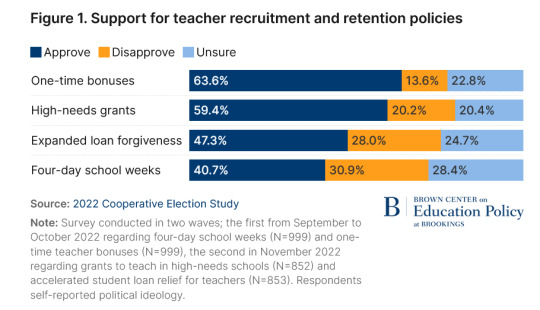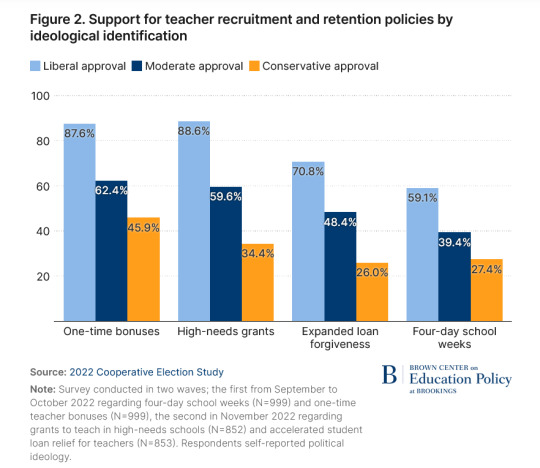#Strategies For Increasing Student Enrolment
Explore tagged Tumblr posts
Text
The government will scrap a visa scheme, set up by Boris Johnson's government, that allows firms to hire health and social care workers from overseas. Instead, firms will be required to hire British nationals or extend the visas of overseas workers already in the country. Home Office figures estimate this change will cut the number of workers coming to the UK by between 7,000 and 8,000 a year. However, care companies warned some services will struggle to survive without international recruits. Employers will also be asked to pay more to hire foreign staff. The Immigration Skills Charge will increase by 32%, leading smaller firms to pay up to £2,400 to sponsor workers to come to the UK, while large firms will pay up to £6,600. Universities could also be hit by higher charges. The government plans to look into a new tax on every international student enrolled in a UK university, with the proceeds redirected into skills training. At the same time, colleges must meet stricter thresholds, with at least 95% of international students expected to start their course and 90% expected to finish.
The qualification requirements to apply for a skilled worker visa will go back up, reversing changes made under Johnson's government. It will mean new applicants will generally need a degree-level qualification, rather than the equivalent of A-level, which ministers say will make around 180 job roles ineligible for the visa route. Lower qualification requirements will remain for sectors facing long-term shortages, or those considered key to the government's industrial strategy. However it is not yet clear what that means in practice, and the government's migration advisory body has been asked to recommend roles for inclusion. The government also said: English language requirements for all work visas would increase The amount of time migrants need to live in the UK before applying for settled status would double from five years to 10, while setting up a fast-track system for "high-skilled, high-contributing" people A "limited pool" of refugees and displaced people recognised by the United Nations' agency responsible will be eligible to apply for jobs through existing skilled-worker routes. The government will also explore changing the law on how the right to a family life contained in Article 8 in the European Convention on Human Rights (ECHR) is applied in immigration cases. The government has previously said Article 8 should be interpreted "much more narrowly", opposing its use in cases including that of a Palestinian family, who were granted the right to live in the UK on appeal after originally applying through a scheme designed for Ukrainians. [...]
Sir Keir dismissed claims the plans were reacting to the threat from Reform, telling broadcasters: "I'm doing this because it is right, because it is fair and because it is what I believe in." He repeatedly attacked the previous Conservative government's immigration approach as an "open borders experiment", which was now over. The UK risks "becoming an island of strangers" without strong rules on immigration and integration, he added.
19 notes
·
View notes
Text
Tim Han Life Mastery Achievers (LMA) Course Review
Are you ready to tap into your potential and seize control of your life? Look no further than the LMA Life Mastery Achievers Course! If you're lacking direction, always feeling stuck or not living up to your capabilities, this course will be perfect for you.
Created by the entrepreneur and mindset coach Tim Han, it offers an experience that will empower you to succeed in all areas of your life.
Learn about LMA Life Mastery Achievers Course Review By Tim Han. We will also discuss the intricacies of the LMA Method, examine its advantages and disadvantages, compare it to development courses available and ultimately share our final thoughts and recommendations.

What is the LMA Method?
The Life Mastery Achievers Method is designed to help individuals unlock their potential. This comprehensive course incorporates strategies, powerful techniques and mindset shifts that can transform aspects of your life. It covers a range of areas, such as creating wealth-building relationships, enhancing leadership skills, increasing productivity and fostering personal growth.
The LMA Method is truly remarkable because it focuses on application. Tim believes that knowing alone is insufficient; it needs to be implemented to see results. This course combines lessons, interactive exercises, and actionable steps to empower you with the tools to create lasting change in your life.
Tim openly shares his challenges and successes throughout his journey towards achieving greatness, making it easier for students to connect with him on a level. His passion for assisting others shines through each lesson delivered in a manner.
Advantages of the LMA Course
Tim Han has created this program to cover aspects of mastering life, including mindset, goal setting, productivity and success habits. This comprehensive approach ensures that participants receive a rounded education in growth.
The course provides tools and techniques that can be easily incorporated into life. Students are equipped with steps to achieve their objectives, from visualization exercises to communication strategies.
Another advantage is the sense of community that accompanies enrollment in this course. Do participants gain access to a network to connect with like-minded individuals on their journey towards self-improvement
How is the LMA course different from other courses available in the market?
There are options in the market, each claiming to offer unique strategies and transformative approaches to success and fulfilment. However, assessing your goals and requirements is crucial before investing in any program.
The LMA Life Mastery Achievers Course stands out for reasons. Firstly, it is built upon the proven methods developed by Tim Han himself. With his experience as an entrepreneur and mindset coach, Tim understands what it truly takes to achieve mastery in life.
What sets the LMA Method apart from development courses is its focus on more than surface-level techniques or quick fixes. It delves into the core beliefs and patterns that shape our lives, emphasizing the power of mindset reprogramming. Moreover, it provides tools to shift limiting beliefs and foster lasting transformation.
In conclusion
Tim Han stands out as an entrepreneur and mindset coach, surpassing the ordinary. He has empowered numerous individuals globally to overcome their limitations and turn their wildest aspirations into reality through his involvement in the development sector. What sets him apart is his methodology towards mastering life. Read here to learn more about Tim Han's unveiling of the Mindset Maven.
The LMA Life Mastery Achievers Course offers numerous benefits, such as its comprehensive curriculum and practical tools for personal growth. However, potential participants must consider costs and self-discipline before deciding.
#Tim Han#entrepreneur#LMA#LMA Course#founder#startup#Success Insider#Coach#Author#Life Mastery Achievers#LMA Method
94 notes
·
View notes
Text
G Witch Onscreen Text: Episode 10
Wow! If you're reading this, you've reached Part "Eleven" ("Onze" in Portuguese, "Ju ichi (十一)" in Japanese) of my attempt to document and transcribe all the onscreen text in G Witch! (Although at this point, it's more like an episode by episode analysis of the series as well...)
<< Click Here to go to Part Ten! (Dez) (Ju)

Sit back, grab a drink, and join me under the cut! Because...after all..

Delling is going to die.
There's actually not any legible text for a good bit of the episode's opening, so I thought I'd take some time to talk about an interesting Text Related Thing !
For a long time, I was trying to figure out if there was any method to the naming convention behind Asticassia's Student IDs. After I spent an embarrassing amount of time thinking about it, I realized I had never actually gone through the official website to check... and as it turns out, the convention is in fact stated right there !

The ID has 3 parts to it: The Student's year of admission, their department, and their personal id number.
Year of Admission: "K" denotes a Third-year student "L" denotes a Second-year "M" denotes a First Year
Department: "P" denotes the Piloting department. "M" denotes the Mechanical department "S" denotes the Management Strategy Department
Personal ID: It's a bit tough to denote exactly what the website means when it says "The personal number is determined by the hierarchy of the recommending companies," but my best guess is that it has to do with the rank of the company that submitted the student. (But is also probably affected by, like, the order of admission...)
So, for example, Miorine's ID is LS001. So: L - Second Year S - Management Strategy Student 001 - Considering her dad is President of the Entire Group, it makes sense that her personal number is 001.
Guel - KP001: K - Third Year P - Piloting Department Student 001 - As we discussed before, Jeturk Heavy Machinery was ranked #1 in the group when the story starts, so again, it makes sense that Guel's personal number is also 001. (This also shows that Personal Numbers aren't strictly unique across the whole student body, but within the combinations of Admission Year + Department)
Interestingly, Elan Ceres is KP002 and Shaddiq is KP003, despite how when the story starts, Grassley is rank 2 and Peil is rank 3 within the group. This could mean that maybe the companies were swapped when the two were admitted and ID's can't be changed, or that Elan was just admitted before Shaddiq.
Lauda is KP013, but since he was also definitely admitted by Jeturk, he might have just been admitted a little bit after Guel for some reason, maybe? Don't think too hard about it.
But knowing this tells us some other interesting things too!
For example, with the exception of Lilique, Suletta, and Chuchu, all the Earth House students have ID numbers in the 200s. (Except for Norea and Sophie but they don't count) Martin: KS229 Aliya: KM237 Till: KM231 Nika: LM236 Nuno: LM238 Ojelo: LM232 Suletta: LP041 Lilique: MS119 Chuchu: MP039
If I may make an assumption, this might be because a lot of the Earthian students didn't enroll with the recommendation of a company. (Aliya mentions in the 1st Drama CD that she and her family didn't know much of anything about Asticassia, and she enrolled to the school on her own.)
Running with this assumption, Chuchu might be so high up (at 039) because we do know for a fact that the people that sent her to the school are Mobile Craft Operators. She might have used the mobile craft company her family works for as her recommendation.
Lilique is unknowable. Forgive me.

On the board at Earth House, we can see the to do list Lilique has written for business to take care of. TEXT: This week's online meeting schedule New applicants for investments Prepare budget sheet Final Adjustment of GUND prosthetics by operation test AERIAL repair status Ideas for increasing PV views
As we can see in the scene, the students are actually hard at work taking care of the things on the list. Lilique is in an online VOICE ONLY meeting, Aliya and Martin are working on the budget sheet, Ojelo, Chuchu, Nika, Suletta, and Nuno are working on the operation test, and Till and Miorine are checking on AERIAL (among other things)
Another cute touch is that before the founding of the company, the symbol on the back of the board was the Earth House Emblem, and now it's the GUND-ARM logo



God help me I don't know why of all the colors on god's green earth that they chose a light ass blue on white ass legs but Kaori Seki (Monitor/Graphics Designer) gives their toughest text to their silliest warrior. (me) My BEST Guess for what this says is: GUND MONITORING SYSTEM 01
I'm reasonably confident in GUND, SYSTEM, and 01, but i can only make out about half of "Monitoring." Considering the nature of the tests they're running on the legs, and how Ojelo says he's established a connection with them, I'm gonna go ahead with believing that I'm reasonably accurate with my reading.

The Tilting Tables also say GUND PROSTHETIC LEG MONITORING SYSTEM (and also READY.) So I think I'm right.

The tables' displays also change to 100%: NO ABNORMALITY when Suletta steps on them.

TEXT: WISH: 005 - EAT LUNCH WITH FRIENDS WISH: 006 - MEET UP WITH FRIENDS TO GO TO SCHOOL WISH: 007 - EXCHANGE CONTACT INFO WISH: 008 - TELL A JOKE AND MAKE EVERYONE LAUGH WISH: 009 - SHARE MATCHING ACCESSORIES AND KEYCHAINS WITH FRIENDS WISH: 010 - CALL FRIENDS BY NICKNAMES
Here we get a peak at Suletta's wish list. Do your best to fill it all out Suletta...! We also see that, accurately, "Share accessories" is in fact after "Tell a joke"

Off topic, but something that's only funny to me is that, when Suletta shows Nika the Cool-san and Hot-san Keychains, the word she says is (accurately) translated as "Keychains," but the word she actually says is "キーホルダー" (Kii Horudaa) which literally translates to "Key Holder"
Suletta is called The Key to unlocking the door for Aerial, and she's also the Holder at Asticassia. She's literally a Key Holder herself! Ho Ho Ho!


Something we hear about every so often but never really get a broader look into is how Grassley appears to be swamped in a succession race, most likely because Sarius is concerned he might die soon and needs to leave the company to a worthy heir when that happens. Shaddiq was leading that race, and that's most likely why the position of Acting CEO fell to him when Sarius "disappeared."
Also there's something about how everything at Plant Quetta only happened because Sarius erroneously told his son about Jeturk's plan because he thought he could trust him.

I will do my best to also document all of Norea's drawings that we see. I...think this one is a dead moth...? M....Maybe....? (Please correct me)

TEXT: GUEST: MIORINE REMBRAN GUND-ARM INC. COMPANY REPRESENTATVE What she says during this interview is as follows: "One strength of GUND treatment is that it can extract the user's intentions from comprehensive biological data. Thanks to this strength, we believe we can enable you to physically adapt to the space environment."

Okay now it's time to talk about this fucking scene. I think about this fucking scene all the time.
Okay so first of all, it's an intentional allusion to El4n's habit of silently appearing out of nowhere. But something is very immediately and tangibly off about it this time. Firstly, whenever El4n would appear, he would always be approaching Suletta when he makes himself known. He never just stood and waited for her to show up.
Secondly, whenever El4n would appear, his appearance would swiftly be accompanied with the track Tell Me More About You, which is a calming piano piece that leads with El4n's main motif.
youtube
(Funnily enough, "Tell Me More About You" plays more often for El4n's appearances in the show than his actual theme, aptly titled "Elan Ceres." From what I can tell, this song only plays when Suletta brings Elan out of the destroyed Pharact and they have their moment.)
The song usually starts playing almost immediately as soon as El4n appears on screen, if not before. (It even plays when Original Elan is pretending to be him at the Incubation Party.) But in 5lan's initial confrontation with Suletta, there is NO music. NONE. There's not even background ambiance. It is DEAD silent for a MINUTE.
Up until Suletta tells El4n she can't date him because of Miorine, to which he responds that it's okay because "that's all a lie, isn't it?" At Which the song My Depression cuts in, which is a distorted, unsettling arrangement of El4n's motif.
youtube
AND THEN, when 5lan continues to come onto her and she shoves him and runs away, we cut to a shot of Original Elan talking to one of the Peil Witches (Nugen) about "That new enhanced person," stating out loud that the Elan we just saw ISN'T El4n.
This scene literally drives me crazy because it is utterly perfect in its execution but it feels like it came directly from an alternate version of the story where we as the audience didn't ALREADY KNOW El4n had been killed. LIKE, AM I CRAZY??????

Anyway, we are shown the same data sheet for 5lan that we saw for El4n in Episode 6. Not much to be said here, the DECISION CRITERIA is Rank A, the graph is empty, and his test results all show "NO ABNORMALITY" , presumably because 5lan hasn't piloted the Pharact yet. We unfortunately don't get a closer look at the EEG section in this shot either.

Not text, but we can see that on the greenhouse monitor, Miorine is looking at a mockup of the Prosthetic Legs. She's probably looking over the results of the operation test from earlier. And thus, we have reached the end. My final gift to you:


In a scene where Miorine is unintentionally hurting someone she loves by emulating her father's worst traits, it's fitting that she's physically copying him as well, hm?
Episode 11. >>
Masterpost.
36 notes
·
View notes
Text
Brazil’s ban on online health and teaching degrees to begin in August
Distance learning ban will not affect current students; hybrid and in-person formats required for new admissions

Starting in August, higher education institutions in Brazil will no longer be allowed to enroll new students in distance learning (EAD) programs such as nursing, engineering, education, and teaching degrees, as per new rules under the country’s updated regulatory framework. These programs will now be classified as “phasing out” on the Ministry of Education’s (MEC) official platform. The measure was published on Wednesday (21) in Brazil’s Official Federal Gazette.
Since many institutions are not yet authorized to offer hybrid programs (those combining online and in-person elements), the ministry has introduced a simplified process to obtain approval—applicable to institutions that currently operate online programs. Still, colleges will face challenges, including the need to increase in-person classroom hours, hire additional faculty, and upgrade infrastructure at learning centers.
In the case of nursing programs, no new students will be allowed to enroll in either online or hybrid formats. The degree will be offered exclusively in an in-person format going forward.
“This will increase costs because it requires a great deal of investment. The question is what strategy large education groups and private institutions will adopt, whether to raise tuition or absorb these costs to avoid losing students,” said Jucimara Roelser, a distance education consultant at Hoper.
Continue reading.
2 notes
·
View notes
Text
Best Share Market Courses in Pune to Kickstart Your Trading Journey
If you're looking to build a solid foundation in stock trading and investments, enrolling in Share Market Courses in Pune can be a game-changer. Pune has emerged as a hub for financial education with an increasing number of professionals, students, and homemakers taking interest in the stock market. Whether you are a complete beginner or someone with basic knowledge looking to sharpen your skills, Pune offers a wide range of share market training programs to meet your needs.
Why Take Share Market Courses in Pune?
The share market may appear overwhelming to many, with its fluctuating trends and complex charts. However, the right guidance and structured learning can help anyone become a confident trader or investor. Share Market Courses in Pune are designed to offer practical knowledge and real-world exposure. From learning how to read candlestick charts to understanding market psychology, these courses simplify technical and fundamental analysis in an easy-to-understand manner.
These programs often include:
Basics of stock market & trading terminology
Introduction to NSE, BSE, Sensex, and Nifty
Technical analysis using indicators and chart patterns
Fundamental analysis for long-term investment
Live trading sessions and mock practices
Risk management and portfolio building strategies
The city is home to several reputed institutes and trainers who bring years of industry experience, which is crucial when learning something as dynamic as trading.
Who Should Consider These Courses?
Share Market Courses in Pune are suitable for a wide audience, including:
College students aiming to build an early financial understanding
Working professionals looking for alternative income sources
Entrepreneurs and business owners seeking investment knowledge
Retired individuals planning for wealth preservation
Homemakers interested in passive income opportunities
These courses usually don’t require any prior experience in finance, making them accessible to everyone with the willingness to learn.
What Makes Pune a Great Place for Learning?
Pune, being an educational and IT hub, has a vibrant ecosystem of learners and professionals. The city offers a mix of online and offline courses, weekend batches for working individuals, and short-term certifications. Many institutes also offer internships or mentorship support to help students transition from learning to actual trading.
Moreover, the affordability and quality of education make Share Market Courses in Pune an attractive option compared to other metro cities. Learners also benefit from regular seminars, webinars, and stock market meetups conducted locally.
Key Benefits of Enrolling in Share Market Courses
While YouTube videos and blogs offer fragmented learning, structured courses provide:
Systematic and step-by-step training
One-on-one mentorship and doubt-clearing sessions
Real-time market case studies and simulations
Certifications that can enhance your professional profile
Community access for ongoing support and networking
These benefits ensure you're not just gaining theoretical knowledge but also learning how to apply it in real market conditions.
Conclusion
When it comes to top-rated institutions offering Share Market Courses in Pune, eMS Stock Market Institute stands out as a go-to choice for aspiring traders and investors. With experienced mentors, hands-on training, and a strong focus on practical learning, eMS has helped hundreds of individuals confidently step into the world of stock markets.
Whether you want to become a full-time trader or simply wish to manage your own investments better, enrolling in one of the trusted Share Market Courses in Pune is a smart first step. Start your journey today and take control of your financial future.
#stock market classes in pune#stock market institute in pune#stock market classes#stock market classes near me
2 notes
·
View notes
Text
Overview of DETP India
Overview of DETP India
DETP India (Digital Empowerment Training Program) is a powerful initiative helping India’s youth, students, startups, and MSMEs build essential digital skills. It was founded in 2013 and based in Sanganer, Rajasthan, DETP India is part of Arihant Global Services India Pvt. Ltd. And the mission is to close the digital gap and promote self-reliance across all over the country.
Mission and Vision
DETP India's core mission is to empower individuals and businesses by providing practical digital education and skill-building opportunities. The program intends a digitally inclusive ecosystem where:
• Every student is professionally skilled with an effective digital portfolio.
• Every MSME and startup goes through digital transformation.
• Youth act as digital change-makers within their communities.
By 2027, DETP India aims to create a perspective where digital empowerment leads to increased employment, entrepreneurship, and innovation.
DETP India offers a diverse range of services personalized to meet the unique needs of various participants:
Digital Marketing Learning: The course covers SEO, social media marketing, and online branding.
Communication and Soft Skills: Training to enhance interpersonal and professional communication.
Entrepreneurship & Leadership Training: Programs designed to improve entrepreneurial mindsets and leadership qualities.
Digital Transformation Support: Assistance in establishing a strong online presence through website development and social media integration.
Online Branding and Marketing Solutions: Strategies to Attract More Customers and Drive Business Growth.
Sector-Specific Services:
• Healthcare: Enhancing online visibility for healthcare providers to reach and build trust with patients.
• Education: Supporting educational institutions in expanding their digital footprint to attract and enroll more students.
The program also encourages a network of student Single Points of Contact (SPOCs) who act as local digital enablers, facilitating the spread of digital literacy and skills in their respective communities.
Why Choose DETP?
As India is shifted towards a digital-first economy, DETP India provide the student with the skills and confidence which employers want. Here’s what DETP India is offering:
Digital Marketing: Hands on work Experience in generate creative content, performance marketing, profile optimization, SEO, SMM, and many more.
Communication & Soft Skill Development: To Build strong communication and the leadership abilities.
Mentorship & Expert Suggestions: Get the personalized mentorship and career advice from the industry expert.
Career Placement Training: Modules are aligned with the real-world demands for easy job readiness.
Overall Development: To develop both technical skills and the personal branding to become a confident professional.
Our Achievements and Milestones:
Over 100 Students Enrolled
More than 50 MSMEs and students digitally transformed
More than 70 Jobs and Internships Facilitated
99.9% Happy Students
DETP India invites individuals and businesses to become the part of this transformative journey towards a digitally empowered nation. By participating in DETP India's programs, all the participants can unlock the new opportunities, also build up their digital capabilities, and contribute to the broader vision of a self-reliant and digitally skilled India.
For more information and to explore the range of services offered, visit:
Website: https://detpindia.in
Facebook: https://www.facebook.com/detpindia
Instagram: https://www.instagram.com/detpindia
Twitter: https://x.com/Detpindia
LinkedIn: https://www.linkedin.com/showcase/detpindia
YouTube: https://www.youtube.com/@detpindia
📧 Email: [email protected]
📞 Call Us: 0141-2942622
📍 Address: Plot 25, G2, Dalda Factory Rd, Green Nagar, Durgapura, Rajasthan, 302018
1 note
·
View note
Text

Elevate Your College's Online Presence with Expert Internet Marketing
In today’s digital world, colleges need more than just a website to stand out. SEO Kochi offers specialized Internet Marketing for Colleges, helping educational institutions increase visibility, attract prospective students, and drive engagement. From search engine optimization (SEO) to social media marketing, we provide end-to-end digital strategies tailored to the needs of colleges and universities.
At SEO Kochi, we understand that each college has its own unique goals and challenges. That’s why we offer customized marketing solutions designed specifically for educational institutions. Whether you need to improve your search engine rankings, run targeted social media campaigns, or create compelling content to engage prospective students, we build strategies that align with your objectives and deliver measurable results.
Our approach is rooted in data driven insights, ensuring that your internet marketing efforts are continually optimized for the best return on investment (ROI). We track performance across all channels SEO, PPC, social media, and content marketing to guarantee that your college’s marketing strategy remains effective and results-oriented. Let SEO Kochi help you connect with the right audience and drive student enrollments through powerful, proven internet marketing tactics. Explore how our Internet Marketing for Colleges can boost your institution’s digital presence and bring more students to your campus.
2 notes
·
View notes
Text
Boost Your Career with ASDC Kanpur: Best Courses in Graphic Designing, Digital Marketing & English Speaking
In today’s fast-paced digital world, having the right skills can set you apart in the job market. Whether you want to become a graphic designer, digital marketer, or fluent English speaker, ASDC Kanpur provides high-quality training to help you succeed. Our expert-led courses in graphic designing, online English speaking, digital marketing, and social media marketing are designed for students, professionals, and entrepreneurs who want to grow in their careers.
Graphic Designing Course in Kanpur: Unlock Your Creativity
The demand for skilled graphic designers is increasing rapidly as businesses seek visually appealing designs for branding and marketing. Our graphic designing course in Kanpur teaches essential tools such as Adobe Photoshop, Illustrator, CorelDRAW, and Canva.
What You Will Learn:
✅ Logo & Branding Design ✅ Social Media Post & Ad Design ✅ UI/UX Basics for Web & App Design ✅ Print Media Design (Brochures, Flyers, Business Cards)
With hands-on projects and real-world applications, our course ensures that you gain practical skills to work as a freelancer or get hired by top companies.
Online English Speaking Course: Speak Fluently with Confidence
Effective communication is the key to success in any field. Our online English speaking course is perfect for students, job seekers, and professionals who want to improve their fluency and confidence.
Course Highlights:
✅ Vocabulary & Grammar Enhancement ✅ Accent & Pronunciation Training ✅ Business & Conversational English ✅ Interview & Public Speaking Practice
With expert trainers and live interactive sessions, our course prepares you for interviews, meetings, and social interactions in English-speaking environments.
Digital Marketing Course: Master the Art of Online Growth
In the digital era, businesses need marketing experts to build their online presence. Our digital marketing course in Kanpur covers everything from SEO to paid advertising.
What You Will Learn:
✅ Search Engine Optimization (SEO) ✅ Google Ads & Pay-Per-Click (PPC) Advertising ✅ Email Marketing & Lead Generation ✅ Content Marketing & Blogging
This course is ideal for entrepreneurs, business owners, and job seekers who want to master online marketing strategies.
Social Media Marketing Course: Grow Brands with Engaging Content
Social media is one of the most powerful tools for businesses today. Our social media marketing course teaches how to build a strong brand presence on platforms like Facebook, Instagram, and LinkedIn.
Course Modules:
✅ Social Media Strategy & Planning ✅ Facebook & Instagram Ads ✅ Influencer & Affiliate Marketing ✅ Analytics & Performance Tracking
By the end of this course, you’ll be able to create and manage successful marketing campaigns that drive engagement and sales.
Why Choose ASDC Kanpur?
✔️ Expert Trainers with Industry Experience ✔️ Hands-on Learning with Live Projects ✔️ Certification & Job Assistance ✔️ Flexible Online & Offline Classes
At ASDC Kanpur, we are committed to helping you achieve your career goals. Whether you’re looking to become a graphic designer, digital marketer, or fluent English speaker, our courses provide the right training and practical knowledge to help you succeed.
🚀 Enroll Today! Click Here
1 note
·
View note
Text
What Are the Best Personal Loan Options for Private Tutors?
Private tutors play a crucial role in shaping students' academic success. However, since tutoring is often considered a self-employed profession, securing a personal loan can be challenging. Unlike salaried employees, private tutors may not have a fixed monthly income or employer-backed financial documents, making it difficult to prove financial stability to lenders.
The good news is that many financial institutions offer personal loans tailored to the needs of self-employed professionals, including private tutors. In this article, we will explore the best personal loan options available, eligibility criteria, documentation requirements, and strategies to improve approval chances.
Why Do Private Tutors Need a Personal Loan?
As a private tutor, you may require a personal loan for various reasons, including:
Expanding your tutoring business (renting a classroom, purchasing study materials, or upgrading technology).
Covering unexpected personal expenses (medical emergencies, home repairs, or debt consolidation).
Investing in skill development (enrolling in advanced courses or certifications to enhance your teaching career).
Managing cash flow issues during low-income months.
Since private tutors may not always have a steady income, accessing a personal loan with flexible repayment options can be highly beneficial.
Best Personal Loan Options for Private Tutors
There are several lenders that provide personal loans to self-employed professionals, including private tutors. Below are some of the best options:
1. Banks Offering Personal Loans for Self-Employed Individuals
Many banks offer personal loans to self-employed individuals, including tutors, based on income proof and creditworthiness. Some top banks include:
HDFC Bank – Offers personal loans for self-employed individuals with minimal documentation.
ICICI Bank – Provides loans with flexible tenure and competitive interest rates.
Axis Bank – Offers loans based on bank statements and credit history.
State Bank of India (SBI) – Provides personal loans under special schemes for self-employed professionals.
2. Non-Banking Financial Companies (NBFCs)
NBFCs are more flexible in their lending criteria and may approve loans for private tutors who have difficulty meeting traditional bank requirements. Some NBFCs offering personal loans include:
Bajaj Finserv – Provides collateral-free loans with instant approval.
Tata Capital – Offers customized loan options for self-employed professionals.
Fullerton India – Provides personal loans with flexible documentation requirements.
3. Digital Lending Platforms
Fintech companies and digital lending platforms offer quick and easy personal loans to self-employed individuals. These platforms use alternative credit assessment methods, such as transaction history and digital footprints. Some top digital lenders include:
MoneyTap – Offers flexible credit lines for self-employed professionals.
KreditBee – Provides instant personal loans for self-employed individuals with minimal paperwork.
EarlySalary – Specializes in small-ticket personal loans with quick disbursal.
4. Government-Backed Loan Schemes
Some government schemes support self-employed professionals, including tutors, by offering financial assistance:
Mudra Loan Scheme (PMMY) – Provides small business loans for self-employed professionals, including educators.
Stand-Up India Scheme – Supports entrepreneurs and small business owners with financial aid.
Eligibility Criteria for Private Tutors Applying for a Personal Loan
While eligibility criteria may vary across lenders, most financial institutions consider the following factors when approving personal loans for private tutors:
Age – Typically between 21 to 60 years.
Income Stability – A steady income with at least 2-3 years of tutoring experience.
Credit Score – A credit score above 700 increases the chances of approval.
Debt-to-Income Ratio – A lower DTI ratio (below 40%) is preferred.
Business Continuity – Proof of tutoring services through invoices, student payments, or online platforms.
Documents Required for a Personal Loan
To secure a personal loan, private tutors must submit essential documents, such as:
Identity Proof – Aadhaar Card, PAN Card, Passport, or Voter ID.
Address Proof – Utility bills, rental agreements, or passport.
Income Proof – Last 6-12 months' bank statements and Income Tax Returns (ITR) for the last 2 years.
Business Proof – Tutoring invoices, online course earnings, or student fee receipts.
Credit Report – A credit score report from agencies like CIBIL or Experian.
Providing accurate financial documentation improves loan approval chances.
Challenges Faced by Private Tutors in Securing a Personal Loan
1. Irregular Income
Since private tutors often have seasonal income variations, lenders may perceive them as high-risk borrowers.
2. Lack of Income Proof
Many tutors work on a cash basis, making it difficult to provide income proof such as salary slips or tax returns.
3. Lower Credit Score
Delays in bill payments or inconsistent financial records may lead to a lower credit score, affecting loan approval.
4. High-Interest Rates
Self-employed professionals often receive higher interest rates due to the absence of a fixed income.
How to Improve Personal Loan Approval Chances?
1. Maintain a High Credit Score
Pay credit card bills and existing loans on time.
Keep credit utilization below 30%.
Regularly monitor and improve your credit score.
2. Keep Financial Records Updated
Maintain proper income documentation through bank transfers and digital payments.
File Income Tax Returns (ITR) regularly.
3. Apply with a Co-Applicant or Guarantor
Adding a co-applicant (such as a spouse or family member with a stable income) increases approval chances.
A guarantor with a strong credit profile can boost credibility.
4. Opt for a Lower Loan Amount
Applying for a loan amount that aligns with income levels reduces the risk for lenders.
5. Choose the Right Lender
Compare banks, NBFCs, and fintech lenders before applying.
6. Consider a Secured Loan
If unsecured loans are difficult to obtain, applying for a secured loan (backed by collateral like property, gold, or fixed deposits) can be a better option.
Conclusion
Private tutors can qualify for personal loans despite not having a fixed salary. By choosing the right lender, maintaining a strong financial record, and improving credit scores, tutors can enhance their chances of loan approval. Banks, NBFCs, and digital lenders offer various personal loan options, each with unique benefits and eligibility criteria.
If you are a private tutor seeking financial support, compare different lenders, maintain proper documentation, and take proactive steps to strengthen your loan eligibility. A well-planned personal loan can help you expand your tutoring career, manage personal expenses, and secure your financial future.
#personal loan online#nbfc personal loan#fincrif#loan apps#bank#loan services#finance#personal loans#personal loan#personal laon#PersonalLoan#PrivateTutors#LoanForTutors#SelfEmployedLoan#TutoringBusiness#FinancialSupport#EducationLoan#LoanApproval#TutorFinances#UnsecuredLoan#LowInterestLoan#NBFCLoans#BankLoans#LoanEligibility#SelfEmployedFinance#TutorsLoanOptions#FlexibleLoan#PersonalLoanTips#InstantLoan#LoanWithoutSalarySlip
1 note
·
View note
Text

Transforming Educational Management with Softloom's Institute Management Software
In the ever-evolving landscape of education, effective management systems are essential for institutions aiming to enhance their operational efficiency and improve student outcomes. Softloom’s Institute Management Software stands out as a comprehensive solution designed to streamline administrative processes, optimize resource allocation, and foster an engaging learning environment.
What is Institute Management Software?
Institute Management Software (IMS) refers to a suite of applications designed to assist educational institutions in managing their day-to-day operations efficiently. This type of software encompasses a variety of functions, including student enrollment, attendance tracking, grading, financial management, and communication between students, parents, and staff. By centralizing these processes, IMS not only reduces administrative burdens but also improves data accuracy and enhances the overall educational experience.
How to Implement and Manage Institute Management Software
Implementing and managing Institute Management Software like Softloom involves several key steps:
Conduct a Needs Assessment
Evaluate existing processes to identify challenges and gather input from stakeholders—like administrators and teachers—to determine essential software features.
Select the Right Software
Evaluate software choices according to their ease of use, scalability, and ability to be customized. Choose Softloom for its tailored solutions that cater specifically to educational needs.
Plan for Data Migration
Create a strategy for transferring existing data to ensure no vital information is lost. Leverage Softloom’s support to facilitate a seamless transition.
Provide Training and Support
Offer comprehensive training sessions for all users to ensure they understand the platform. Maintain ongoing support to help with any post-implementation issues.
Monitor and Evaluate Performance
Regularly track software usage and collect feedback from users to identify areas for improvement, ensuring the software continues to meet evolving needs.
Embrace Continuous Improvement
Stay adaptable to changes in education by implementing regular updates from the software provider to keep up with technological advancements and best practices.
Many institutions have successfully implemented Softloom’s Institute Management Software, leading to transformative results. For example, a mid-sized college reported a 30% reduction in administrative workload after switching to Softloom, allowing staff to focus more on student engagement and support. Another institution highlighted improved communication as a key benefit, noting that student satisfaction scores increased significantly after adopting the platform.
Softloom's Institute Management Software is a powerful tool designed to optimize the operations of educational institutions. This comprehensive platform centralizes key administrative tasks, such as student enrollment, attendance tracking, grading, and financial management, allowing staff to streamline workflows and reduce manual errors. Its user-friendly interface ensures that administrators, teachers, and students can easily access vital information, while customizable modules cater to the specific needs of each institution.
Beyond administration, Softloom’s software offers advanced reporting and analytics features that enable institutions to gain insights into performance metrics and student progress. With integrated communication tools, it fosters collaboration among faculty, students, and parents, enhancing engagement and support within the educational community. By leveraging Softloom's Institute Management Software, institutions can improve efficiency, enhance the overall learning experience, and drive better outcomes in an increasingly competitive educational environment.
2 notes
·
View notes
Text
The Spectacular Story of Quest Academy: Whole School Competency-Based Learning
Nicki Slaugh is a trailblazing principal who pioneered personalized competency-based learning at Question Academy Junior High in Utah. Nicki's innovative approach has captured national attention, increasing student engagement, test scores, and teacher retention. In today's episode, Nicky shares the journey of shifting from a traditional school to a dynamic, customized learning environment where every student thrives at their own pace.
Here’s what we’ll cover in today’s episode:
How did Nicki transform her school culture to engage students and raise test scores?
What strategies did she use to retain teachers and increase enrollment?
How does personalized, competency-based learning work in a real classroom setting?
What role does technology play in her innovative model?
How did Nicki empower teachers and students with voice and choice in learning?
What advice does she have for schools looking to implement similar changes?
Show notes and transcript: https://www.coolcatteacher.com/e862
Sponsor: EVERFI from Blackbaud
Do you want to equip your students for success in both their careers and personal lives, but find yourself racing against the clock? EVERFI is your go-to solution! Their entire suite of K-12 products aligns with state standards and has earned the prestigious ISTE Seal. These digital lessons are crafted to empower your students to excel in our dynamic world. Engage and inspire with interactive, self-paced lessons, meticulously designed by content experts. From financial literacy and workforce readiness to character building, mental health and prevention education – these lessons are tailored for students across all grade levels. Best of all, thanks to EVERFI’s generous partners, these research-based resources come at no cost to all K-12 schools, districts and students. Visit everfi.com/coolcat to get started today for free.
Disclosure of Material Connection: This is a “sponsored podcast episode.” The company who sponsored it compensated me via cash payment, gift, or something else of value to include a reference to their product. Regardless, I only recommend products or services I believe will be good for my readers and are from companies I can recommend. I am disclosing this in accordance with the Federal Trade Commission’s 16 CFR, Part 255: “Guides Concerning the Use of Endorsements and Testimonials in Advertising."
New Podcast Episode
2 notes
·
View notes
Text
Over the COVID-19 pandemic and its aftermath, labor shortages have garnered considerable attention, including among public school teachers. Nationwide, the teacher shortage exceeds 55,000 unfilled positions, with nearly five times as many positions held by underqualified candidates. These gaps have been generated, in part, by increased pandemic-era teacher turnover and a 35% enrollment decline in traditional university teacher preparation programs in the decade preceding the pandemic. Meanwhile, interest, prestige, and satisfaction related to the teaching profession have reached 50-year lows.
In response, individual states and the federal government have proposed and enacted various policies to strengthen the teacher workforce. These policies vary widely in scope, encompassing both financial interventions (e.g., teacher pay, loan forgiveness) and non-pecuniary policies around teacher working conditions. While debate over the depths and distribution of the teacher shortage continues, public opinion of enacted and mooted policy approaches varies widely. In this context, improved understanding of public support may inform voter-conscious policymaking, especially in contexts where the effects of policies intended to attract teachers may extend beyond school walls and in instances where policy enactment requires direct voter approval.
To explore public sentiment concerning several teacher recruitment and retention policies, we fielded four questions on the fall 2022 Cooperative Election Study (CES) surveys, which were administered to a nationally representative sample of U.S. adults. While many respondents support the proposed strategies, including teacher bonuses, grants, loan forgiveness, and shortened school weeks, significant partisan differences remain evident.
Public opinion in a partisan era
Policies to improve teacher recruitment and retention vary in scope; some specifically target teachers while others focus on broader economic incentives. We posed four survey questions capturing support for the following policies: 1) Expanding the federal Teacher Education Assistance for College and Higher Education (TEACH) Grant from $4,000 to $8,000; 2) Accelerating federal loan forgiveness programs (e.g., the Public Service Loan Forgiveness Program, the Teacher Loan Forgiveness Program, Perkins Loan Cancellation); 3) Enacting permanent four-day school weeks (4DSWs); 4) Distributing one-time teacher bonuses between $1,000 and $5,000.
The first two proposals focus on potential federal policies to recruit and retain teachers (and broader loan relief objectives) while the latter two proposals focus on state and district approaches to teacher labor markets, primarily addressing teacher retention.
Though the two federal policies may not be predicated directly on their public support, both have garnered significant national debate; the doubling of the TEACH grant stalled through President Biden’s American Families Plan proposal while loan forgiveness remains mired in long-term legal proceedings. Conversely, state and local policies often require direct voter support, either through local school board elections or referenda. Four-day school week policies have grown rapidly, primarily in rural locales, though recent evidence indicates largely negative impacts on student academic outcomes, while questions about their effects on parents, families, and communities remain. Teacher grants and bonuses have proliferated through COVID-19 federal relief funds, a revenue source soon due to expire.
While the efficacy of these policies to stabilize teacher labor markets may vary, our focus lies not in assessing their effectiveness but rather in documenting their public support to inform the feasibility of their enactment and sustainability through public buy-in. The pertinent portions of the CES surveys—which we partnered with YouGov to administer to a national stratified sample of approximately 1,000 adults—queried respondents on their support and opposition to these policies, also collecting their demographic characteristics (e.g., race, income, employment status), and political ideology, factors previously linked to policy support. Each question was contextualized for respondents as a potential tool to improve teacher recruitment and retention.
Polarization and partisanship frequently predict policy preferences, eclipsing demographic factors like age, race, and ethnicity, and even material self-interest. Combined with rhetoric from political leaders, partisanship can lead voters to oppose policies from which they stand to benefit. In our increasingly polarized political environment, Americans often view members of the other political party with distrust, which can lead voters to oppose policies based on political endorsements and to impede goals of the other political party. Thus, we expect partisanship to influence respondents’ preferences regarding education policy, particularly on politicized issues.
Contemporary public opinion on teacher shortage policies
On the one hand, each policy proposal garnered at least a plurality of public support. One-time bonuses (63.6%) and grants to teach in high-need schools (59.4%) were most popular; expanded loan forgiveness (47.3%) and permanent 4DSWs (40.7%) received more limited support (see Figure 1). In addition, support for each policy outstripped opposition by between 10 (4DSWs) to as many as 50 percentage points (one-time bonuses); between two and three in 10 respondents remained unsure of their support for each policy.

On the other hand, significant partisan variation underlies this support. Whereas most liberals support enacting each tactic (between 59.1% and 87.6%), only a plurality of conservatives supported one-time bonuses and a majority disapproved of the remaining strategies (see Figure 2). In fact, only slightly more than one in four conservatives indicated support for expanded loan forgiveness (26.0%) and 4DSWs (27.4%).

Only a few additional characteristics beyond partisanship predicted respondent preferences. Racial minority respondents and those holding a bachelor’s degree each indicated greater support for grants to teach in high-need schools. Additional characteristics like family income, gender, employment status, urbanicity, and age rarely, if ever, predicted policy preferences.
Situating our findings
Recently, scholars have explored partisan sorting in education, showing increasing polarization in education-focused topics, including in familiar debates concerning Common Core State Standards, public school quality, and education spending. Our findings showing partisan differences in support for these policy ideas are not entirely surprising, as some topics in education policy have become well-publicized, polarizing hot-button issues (e.g., ESAs, COVID-19 protection measures, book content, instruction discussing sex, gender orientation, and race and ethnicity).
Republican trust in institutions has been declining for several years. A summer 2023 Gallup poll shows a 34-point partisan gap in confidence in public schools, second only to the gap in confidence in the presidency. Affective partisanship and rhetoric from Republican elites also seems to have impacted Republican views of higher education. For example, a Pew Research Center survey illustrates a rapid decline in the number of Republicans who believe higher education has a positive effect “on the way things are going in the country,” declining from more than half in 2015 to only one in three in 2019. We find that these polarized views impact support for policy issues in education that have yet to feature in the so-called culture wars.
Teacher salaries: The annual Education Next Survey explores many hot-button education-focused topics ranging from perceptions of school quality to preferences for the enactment of new policies and practices. In 2022, responses to queries regarding the trajectory of teacher salaries varied widely by partisan ideology, with 70% of Democrats versus 46% of Republicans generally supporting salary increases.
The cost of education: Loan forgiveness and free two- and four-year college: Consistent with our findings, other survey results regarding loan relief showed a significant partisan divide. While 47% of Americans support some federal loan forgiveness, results from the Quinnipiac University Poll indicate a large partisan divide, with 88% of Democrats indicating approval and 81% of Republicans signaling disapproval. Similar partisan differences emerged in EdNext’s questions regarding free two- and four-year higher education, with Democrats indicating much stronger support (84% and 80%) than Republicans (44% and 36%).
Four-day school weeks: Though we found the least support for 4DSW policies (40.7%), the PDK International Poll recently indicated 53% support 4DSWs, up from 25% two decades ago. The PDK poll motivated 4DSWs with district cost savings whereas our question prioritized teacher recruitment and retention, which district leaders now typically cite as a primary objective of the policy and teachers value as a job perk.
The 2023-24 school year and beyond
As students begin the 2023-24 school year, many will return to schools either under-staffed or staffed, in part, by underqualified teachers, making post-pandemic academic recovery more challenging. Though we find a plurality of adults support a range of teacher recruitment and retention policies, even seemingly politically neutral strategies to address teacher shortages may now court a partisan divide similar to other issues in contemporary education policy, one which may feature prominently in upcoming elections. As a result, the feasibility of implementing local policies like 4DSWs and one-time teacher bonuses may hinge on the direction of local partisanship, while federal policies like loan relief may continue to languish with single-party support.
12 notes
·
View notes
Text

Mastering the Art of Online Learning: Tips and Tricks
In the rapidly evolving landscape of education, the transition to online learning has become increasingly prevalent, presenting both opportunities and challenges for students. Mastering the art of online learning requires a strategic approach, especially when it comes to statistics classes, where data analysis and interpretation play a pivotal role. There are some situations which make the students think who will take my online statistics class for me to complete my projects easily. According to recent studies, the demand for online statistics courses has surged, with a notable increase in enrollment rates. This shift underscores the importance of developing effective strategies to navigate the virtual realm of statistical analysis.
One key tip for success in online statistics classes is to establish a dedicated study space. Research indicates that having a designated area for learning can significantly enhance concentration and overall performance. Create an environment free from distractions, equipped with the necessary tools and resources. Additionally, leverage the power of online forums and discussion groups. Statistics is often best learned through collaboration and the exchange of ideas. Engaging in virtual discussions not only fosters a sense of community but also provides opportunities for clarification and deeper comprehension of complex statistical concepts.
Furthermore, staying organized is crucial when delving into the world of numbers and probabilities. Utilize digital tools such as spreadsheets and statistical software to streamline data management and analysis. Statistics courses often involve a considerable amount of data interpretation, and proficiency in using relevant software can significantly boost efficiency and understanding.
Another valuable trick is to embrace multimedia resources. Online learning offers a plethora of resources beyond traditional textbooks. Video tutorials, interactive simulations, and virtual labs can provide a dynamic and engaging learning experience. Recent educational trends indicate a growing preference for multimedia content in statistics courses, as it enhances visual learning and aids in the retention of complex statistical concepts.
Mastering the art of online learning, particularly in statistics classes, involves a combination of strategic planning, effective organization, and embracing diverse learning resources. By implementing these tips and tricks, students can not only navigate the challenges of virtual statistics courses but also thrive in the digital learning environment. Remember, the key to success lies in adaptability, collaboration, and a proactive approach to online learning.
7 notes
·
View notes
Text
Class Unity, Academic Success: The Impact of Group Learning
The traditional image of learning often involves solitary figures hunched over textbooks in quiet libraries. However, the landscape of education is evolving, and the power of group learning is gaining well-deserved recognition. This collaborative approach, whether in a physical class group or an online learning environment, fosters a sense of class unity and significantly impacts academic success.

Explain Learning understands the importance of fostering a supportive learning environment, both online and offline. In this article, we'll delve into the transformative power of group learning and explore its numerous benefits for students of all ages and disciplines.
What is Group Learning?
Group learning encompasses a variety of collaborative learning strategies where students work together to achieve a common academic goal. This can involve anything from discussing course material in a study group to working on group projects or participating in online forums. The key elements of group learning are shared responsibility, active participation, and the exchange of ideas.
Benefits of Group Learning
There are numerous benefits associated with group learning, making it a valuable tool for students in various educational settings:
Enhanced Understanding: Discussing complex concepts with peers can solidify your grasp of the material. Hearing diverse perspectives can challenge assumptions and lead to a deeper understanding of the subject matter.
Active Learning: Group learning encourages active participation, a key aspect of effective learning. By explaining concepts to others, you strengthen your own knowledge and identify areas where you may need further clarification.
Improved Problem-Solving Skills: Working through challenging concepts together hones critical thinking and problem-solving skills. Brainstorming strategies for approaching difficult questions in a collaborative setting can be highly beneficial.
Boosted Confidence: Discussing problem sets or quiz questions with peers can help identify strengths and weaknesses. The support of a group can build confidence and a sense of preparedness for exams.
Increased Motivation: Studying with a group creates a sense of accountability, keeping you motivated to stay ahead of the curve. Seeing your peers committed to studying can inspire you to do the same.
Development of Communication and Collaboration Skills: Group learning fosters communication and collaboration skills essential for success in both academic and professional settings. You learn to articulate ideas clearly, listen actively, and work effectively with others.
Reduced Stress: Sharing the workload and anxieties associated with academics can make studying less stressful. The camaraderie of a learning group creates a supportive environment that promotes well-being.
Group Learning in the Online Learning Sphere
The rise of online learning platforms has opened up new avenues for group learning. Online forums, discussion boards, and collaborative tools allow students enrolled in the same course to connect and participate in collaborative learning activities regardless of location. Explain Learning, a platform dedicated to supporting online learners, recognizes the importance of fostering connections and building a sense of community. We offer a variety of features that facilitate group learning, including:
Online Forums: Our forums allow you to connect with classmates and engage in discussions about course material. You can pose questions, share insights, and clarify any doubts you may have.
Subject-Specific Communities: We host dedicated online communities for various subjects. Joining the relevant community allows you to connect with students in your field and explore the possibility of forming virtual study groups.
Collaborative Tools: Many online learning platforms offer collaborative tools such as shared documents, whiteboards, and video conferencing that enable students to work together on projects and assignments in real-time.
Maximizing the Benefits of Group Learning:
Whether you're participating in a physical class group or an online learning community, there are steps you can take to maximize the benefits of group learning:
Set Clear Goals: Establish clear goals for each group session. Decide what topics you want to cover and what questions you aim to answer.
Prepare for Meetings: Arrive prepared for study sessions. Review the material beforehand, identify areas you need clarification on, and bring any questions you have.
Active Participation: Be an active participant. Share your understanding of the subject matter, ask questions, and contribute meaningfully to group discussions.
Respectful Communication: Value different perspectives within the group. Practice active listening and ensure everyone feels comfortable asking questions and participating.
Focus and Time Management: While some social interaction is natural, prioritize focused discussions and productive study sessions during group meetings.
Establish Ground Rules: If you're forming your own group, consider establishing ground rules to ensure everyone is on the same page and the group functions effectively.
Conclusion
Group learning offers a wealth of benefits for students, fostering academic success, building valuable skills, and creating a sense of class unity. Whether you're studying in a traditional classroom setting or navigating the online learning landscape, Explain Learning is here to support your journey. Utilize our resources to connect
Know more https://explainlearning.com/blog/class-unity-academic-success/
2 notes
·
View notes
Text
James Cleverly has said the “unreasonable practice” of overseas students bringing their family to the UK will end as restrictions on visa routes come into force on Monday.
The Home Secretary said the ban, which affects all but those enrolling on postgraduate research courses and ones with Government-funded scholarships, will cut migration by tens of thousands.
The measures were announced in May by his ousted predecessor Suella Braverman shortly before official figures showed net migration running at 672,000.
The move could hit universities which rely on foreign student fees and could also harm the UK’s reputation as an international destination, experts have warned.
It means that as of Monday, international students starting courses in Britain are no longer allowed to obtain visas for their dependants, unless they are on a postgraduate research programme or a Government-sponsored course.
Prime Minister Rishi Sunak tweeted: “From today, the majority of foreign university students cannot bring family members to the UK.”
The Conservative Party leader said the announcement showed that the Government was “already delivering for the British people” in 2024.
Mr Cleverly said: “This Government is delivering on its commitment to the British public to cut migration. We have set out a tough plan to rapidly bring numbers down, control our borders and prevent people from manipulating our immigration system, which will come into force throughout this year.
“Today, a major part of that plan comes into effect, ending the unreasonable practice of overseas students bringing their family members to the UK. This will see migration falling rapidly by the tens of thousands and contribute to our overall strategy to prevent 300,000 people from coming to the UK.”
Immigration minister Tom Pursglove said: “Our world-leading universities rightly attract some of the brightest students from around the world to the UK.
“But we have seen a surge in the number of dependants being brought by students, which is contributing to unsustainable levels of migration.”
Revised Office for National Statistic (ONS) figures released last month showed net migration ran at a record figure of 745,000 in the year to December 2022. It stood at a provisional 672,000 in the year to June 2023.
Earlier in December, Mr Cleverly set out a raft of new restrictions that he said would cut numbers by 300,000 a year, including hiking the salary threshold for Britons bringing foreign spouses to the UK to £38,700.
The move was criticised for threatening to tear families apart, with many having their future thrown into doubt as the Government considered the details of the policy.
Ministers later rowed back by quietly announcing the threshold would first be raised to £29,000 and then increased in “incremental stages” until spring 2025, which in turn angered MPs on the Tory right in favour of tighter migration controls.
The Home Office said the new package is a “tough but fair” approach, insisting the changes to student visas strike the right balance between “attracting the brightest and best” to Britain but “removing the ability for institutions to undermine the UK’s reputation by selling immigration not education.”
Experts have previously expressed concern about the measure.
Nick Hillman, director of the Higher Education Policy Institute (Hepi) think tank, said international students will go to competitor nations if they are discouraged from coming to the UK.
“As a country, we risk cutting off our nose to spite our face,” he warned.
“International students benefit the UK in all sorts of ways. For example, they are vital to maintaining our world-class university sector as their fees cross-subsidise the teaching of home students and also help to fund UK research.
“I don’t celebrate the new changes and I urge ministers to keep a close eye on competitor nations, who may now seek to recruit those people who would otherwise have come here and benefited the whole of our country.”
Labour has backed the restrictions but said they do not go far enough to tackle “deep failures” in skills and training across the UK labour market or boost the country’s sluggish economy.
“Labour supports these restrictions on dependants for overseas students on shorter courses. However, this is nothing more than a sticking plaster,” shadow home secretary Yvette Cooper said.
“The Tories’ complete failure to tackle skills and labour market problems is undermining growth as well as increasing migration.”
In the year ending September 2023, 152,980 visas were issued to dependants of students.
4 notes
·
View notes
Text
Erin Reed at Erin In The Morning:
Earlier this year, representatives from Ohio and Michigan were caught in a recorded conversation detailing their plan to end transition "for everyone" by curtailing transgender rights "one bite at a time… incrementally." On Wednesday evening, Ohio Republicans appeared to take the next step in that plan by passing a bathroom ban for transgender youth and adults in schools and colleges, sneaking it into a bill that had already passed the Senate on dual enrollment for students who wish to earn college credits while in high school. If the Senate concurs and the governor signs the bill into law, Ohio will become only the seventh state with restrictions targeted at transgender adults in bathrooms in the United States. The bill, originally penned as House Bill 183, covers K-12 schools and colleges. It would bar all such institutions from allowing transgender people to use the bathroom of their gender identity. Additionally, it prohibits these institutions from maintaining multi-occupancy all-gender restrooms. The provisions could have a huge impact on transgender students in the state, as many schools do not have widely available gender-neutral restrooms.
“Please, don’t support a world where I have to use the restroom in a parking garage instead of the one that I sit right next to while studying, where my girlfriend’s trans coworkers have to leave the building they work in at night just to relieve themselves, or where students at my old high school have to go across a busy intersection just to pee,” said Cam Ogden in a testimony on the bill earlier this year, highlighting that separate gender-neutral restrooms are rarely equal in availability or circumstance.
The bill appears laser-targeted at making life more difficult for transgender people in the state, which may align with Republican plans to end transition "for everyone" in Ohio. Earlier this year, Representative Gary Click, who was responsible for the state’s gender-affirming care ban which was blocked in court, was caught in an audio segment with other Republican legislators explaining plans to ban transition "for everyone.” In that meeting, he stated that any such plan needs to be done "one bite at a time… incrementally." While legislators in that meeting were discussing gender-affirming care specifically, Click connected the bathroom ban with his belief that simply being transgender is "a lie” during last night’s hearing. He also inaccurately claimed that transitioning increases depression and anxiety. In reality, studies show that transitioning alleviates depression and anxiety for transgender people.
Ohio Republicans snuck an anti-trans bathroom bill into a dual enrollment bill that would bar multi-gender restrooms and require trans people using bathrooms in K-12 schools and colleges to use facilities aligned with the gender assigned at birth.
#Bathroom Bills#Ohio#Anti Trans Extremism#Ohio SB104#Ohio HB183#Schools#College#Transgender#LGBTQ+#Gary Click#Dual Enrollment#Transgender Erasure
1 note
·
View note